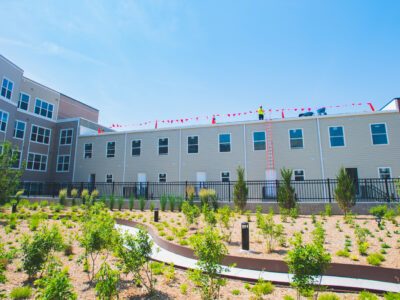There is a state in America’s Midwest — almost in the dead center of the country geographically — that truly exemplifies the word heartland. For a term as open to interpretation as “heartland,” perhaps it’s easier to explain by simply name-checking this state, as its mere mention will likely conjure images of classic Americana that no dictionary could adequately quantify.
Of course, one could speak of the rolling prairie land or miles of crop rows on sleepy back country roads. The description could include the glistening steel and spotless windows of towering skyscrapers above a river, sometimes dyed green on certain holidays, bifurcating a massive metropolis. It could also detail the crimson-clad bucolic college campuses just south of this cityscape.
One could also simply just call this midwestern American tableau by its name: Illinois.
While its human history dates back thousands of years, it wasn’t until the early 19th century that the region that would become present-day Illinois began to grow into what it is today. Settlers from Ohio and Kentucky went west into the area following America’s independence from England. Soon, due to its position along the Great Lakes, the Chicago settlement became one of the fastest-growing and most important areas in the American West.
Today, Illinois is a bit of a bellwether for the United States, and Chicago remains one of the country’s hubs of commerce, sports, and entertainment.
However, life moves along at a decidedly midwestern pace in other, quieter parts of the state, like Peoria and Bloomington.
Aside from this diversity of lifestyle, Illinois has a history that is as vital to the country as any of its contemporaries. Thankfully, two of its most important stories are enshrined in its two National Memorials.
Read on to learn more about these historical treasures from “The Land of Lincoln”:
Pullman National Historic Park: This National Historic Park was commemorated as recently as 2015 by President Barack Obama and is the only one of its kind in Chicago. It tells the story of the first planned industrial communities in the country. Built by a railroad magnate named George Pullman, this community would become a hotbed of labor unrest in Chicago, a type of unrest the city was already familiar with at the time of the construction of the community in the 1870s. Due to the diversity of the workers who lived and toiled there, racial unrest and labor strife would follow, with the infamous Pullman Strike in 1885 being the culmination of the unease between the workers and their employers. This strike would fundamentally change the power dynamic between labor unions and their industries, and the Pullman National Historic Park tells this story, among many more. This noteworthy site is in the heart of America’s “Second City!”
Photo Courtesy NPS
Emmett Till and Mamie Till-Mobley National Monument: One of the nation’s saddest yet most influential stories from the Civil Rights era started in Illinois. The tragedy and indomitable spirit of those who weathered it are commemorated at this National Monument. The site tells the tragic story of Emmett Till’s brutal torture and murder at the hands of white supremacists while he visited relatives in Mississippi. The subsequent decision by his mother, Mamie, to hold an open-casket funeral near their home in Chicago gave the entire world a chance to see firsthand the horrific brutality inflicted on the young black man. The story of Till’s murder and the aftermath would spur meaningful conversations and widespread outrage and would eventually spur change as significant as any in American history. This monument stands to make sure that change is never taken for granted.
Photo Courtesy NPS





